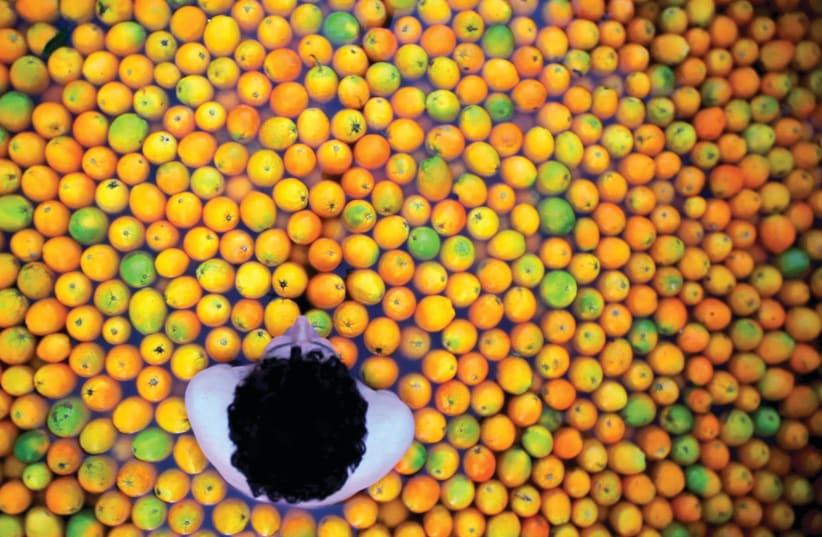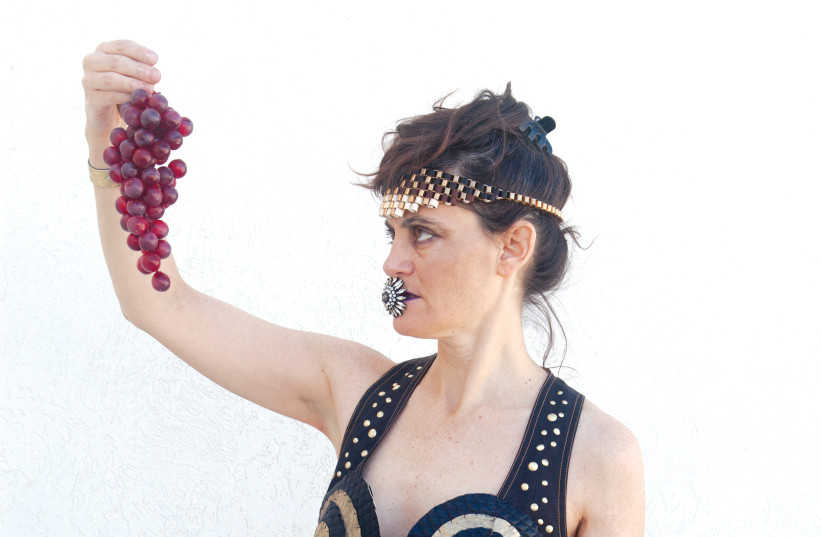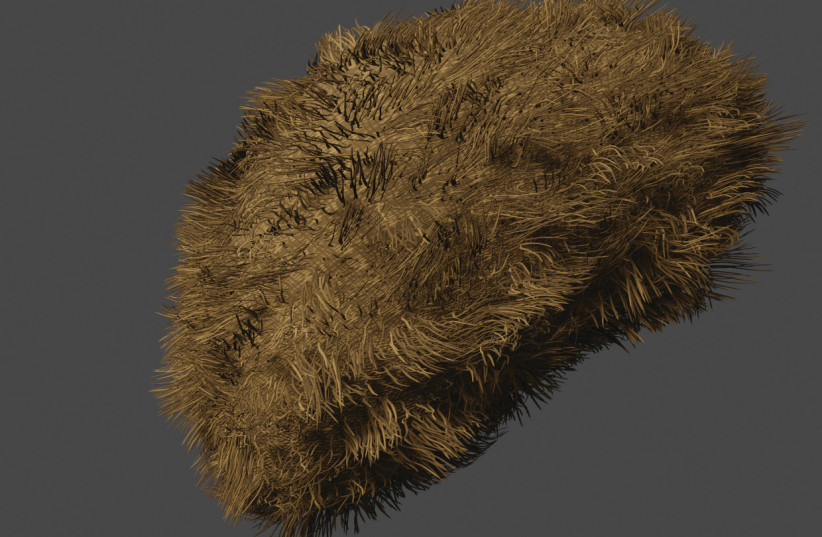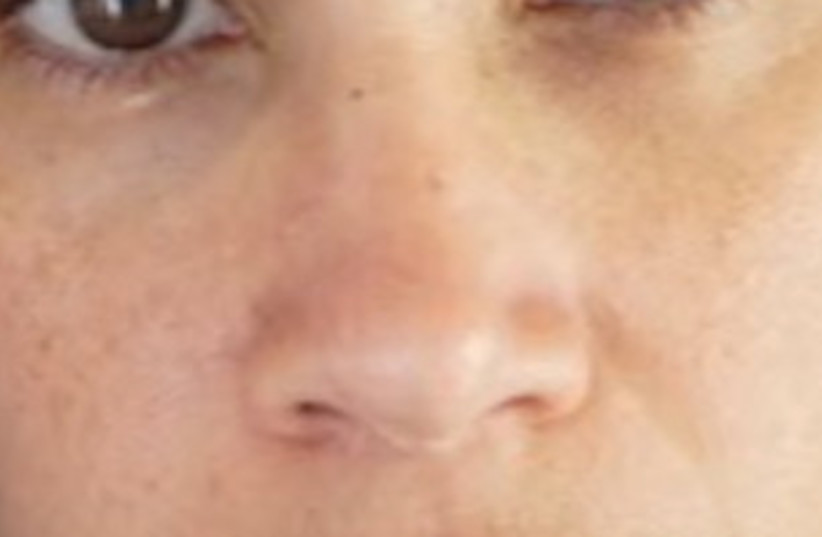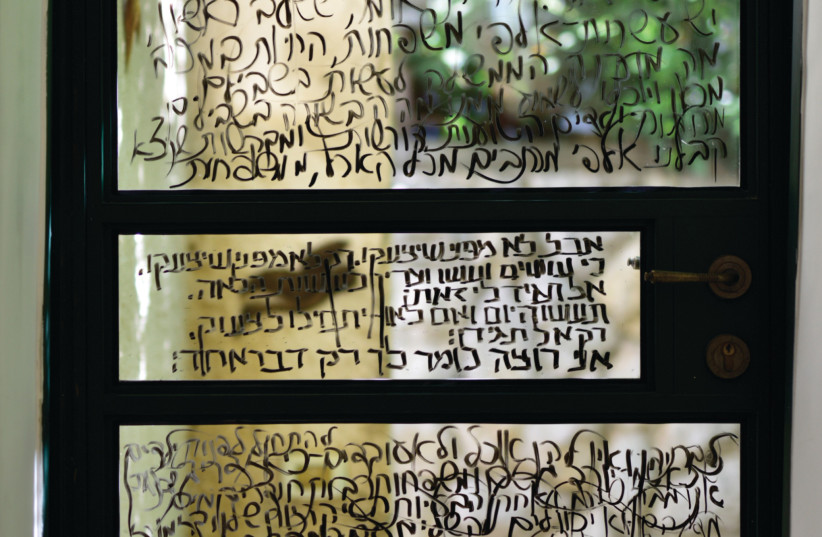MusraraMix is back.
That may sound a little overly dramatic, but the truth is that in this country – blessed, as it surely is, with talent in all walks of creative life – the annual Jerusalemite festival serves as an important driving force and barometer of where the artistic winds may be blowing.
For starters, it is based at Musrara, The Naggar School of Art and Society. For the uninitiated, we are talking about an educational institution that for the past nigh on three-and-a-half decades has followed lofty ideals on several fronts, under the aegis of founder-director Avi Sabag.
Its mission statement notes its aim has always been “to become a center of academic excellence encouraging students and graduates not only to artistic achievements, but also to generate social change by contributing to and empowering the weak through community-based artistic volunteerism in Jerusalem and nationwide.”
The theme of this year’s MusraraMix rollout, the 21st edition, scheduled for November 30-December 2, is High Tones.
The inference of the title is that sometimes, possibly frequently – always? – you have to shout to make your voice heard through the well set fabric of the established order, and set the clanking wheels of change in motion. As Holocaust survivor Nobel Prize-winning writer Elie Wiesel put it so succinctly: The opposite of art is not ugliness, it’s indifference.”
High Tones, says artistic director Vera Korman, is a timely choice and one that suits the arts school down to the ground. “This festival and the next one (in May 2022) look at protests. And it’s been 50 years since the Black Panthers.”
The latter was the mother of all protests in this country, when local residents, the vast majority of whom were from the Sephardi sector, who felt disenfranchised by a succession of Ashkenazi-led governments, rose up to say their disgruntled piece.
“The school is committed to that topic, and we will discuss the history and the state of the neighborhood,” Korman explains.
In fact, celebrating railing against the status quo comes naturally to anyone involved in creative pursuit. After all, by definition, producing art means challenging the Establishment, while the latter does its damnedest to repel all “upstart” boarders.
Then again, just because you have some beef against the way things are does not necessarily mean you are going to come up with some envelope-pushing piece of art.
“As it has been 50 years since the Black Panthers, we decided to talk about protests in general, about protests and art and the relationships between them,” says Korman. “There are many connections between art and protest, although not every protest is artistic, and not all art is protest. But I think the links between them are deep.”
Hence the thematic line of thinking behind the festival. “High Tones comes from that,” she adds.
The pandemic-era fallout has also impacted on next week’s program. “Because of the corona we decided to focus less on exhibitions and more on performance-based live art. That is so that the physical encounter becomes an important tone following social distancing.”
Korman believes the format also lends itself to the expression of dissent. “Performance art is, by tradition, protest-oriented. It protests against ancient traditions in art, and it incorporates feminist protest, bodily protests and racial protests.”
All the above dictated the way the artistic director went about her curatorial business. “Most of the festival is performance art and video performance, and works that address those aspects in art.”
WHILE MANY of us may have yearned to spread our wings during the lockdown and get out and about as far as we possibly could, many artists used the enforced home-based time to look inward, into themselves. Quite a few have talked to me about finding some personal island of tranquility and how that has, since, served them as a springboard for greater creative growth.
Korman certainly took that inside-outside balancing act on board in crafting the MusraraMix agenda, with some of the artists relating to the corporeal form as “a private domain which can represent protest against the exterior environment.”
But the accent here is very much on the individual rather than matters on a more expansive scale – politics with a lowercase “p.” “This is not necessarily about political protest which relates solely to political-social issues. This is the artist using their body for private protest, without necessarily focusing on a state-political aspect. There is the saying that the revolution starts from home. Here we are asking questions about the relationship between art and protest.”
Some of the artists go the extra yard to get the public on board. One interactive work by Kineret Haya Max, called “Making A Sound Without Words,” has visitors calling the tune, literally.
“Kineret relates to herself as a sensor,” Korman explains. “She will stand in the middle of a room and shout ‘aya’, and each time someone enters or exits the room that will change the way she shouts.”
I wondered whether that might be a therapeutic experience for Max.
“I think so,” Korman concurs. “When we protest about something that bothers us, we release our feelings, we release tension. That has to have some healing quality.”
THERE ARE all kinds of intriguing items across the festival lineup. “Thunderous Silence,” by Amin Abu Zahra, looks particularly challenging and smacks of palpable disappointment with the world around the artist. The work, subtitled “Imagined Reality,” is described as “an experience of imagined reality wherein the visitors experience the weaknesses, the inability to change and even the failure to express their real self, in a world that dispenses false promises of freedom of expression and justice.”
Then there’s the brainchild of Shahar Marcus, which seems to be something of an elusive, nay downright slippery, affair. His “Vaseline” performance creation runs the emotional gamut from carefree joy to utter doom and gloom. Marcus slides from side to side across a greased surface, grasping a floral wreath with an elegant ribbon. As the lateral action evolves, the performer gathers more ribbons, and the general mood oscillates between visual beauty and a sense of morbid heaviness. The accumulative effect of the oxymoronic activity is “generating a double-sided feeling of a funereal ritual and a coronation ceremony.”
MusraraMix always comes up with some surprising, even subversive stuff. If you’re looking for an arts event where the participants really let their creative hair down, this is the place.
Noa Reshef’s performance, “8,” is an accepted social mores challenger. Reshef, who spent 12 years living in Spain after completing her studies at the School of Visual Theater in Jerusalem, got up to all sorts of eyebrow-raising artistic antics over there – often of an overtly sexual nature – only to return home to find Israeli society was still run along more conservative lines.
Her performance focuses on the reception area, the anteroom to a hotel, office or some other cloistered environment. It is there, she notes, that the visitor gains their first impression of the place, and where they undergo some sort of admission test to see whether they will be allowed inside.
Reshef’s pandemic-period experiences, which include leading something of a nomadic existence, find their way into the fabric of the performance.
This sort of layout also lends itself to filmic material, and there is an abundance of video works in there.
The “Lo Nehmadim” (Not Nice) video section gets its title from one of the most contentious flash points in Israeli sociopolitical history. It also relates directly to Musrara and the Black Panthers.
At the time, back in 1971, then-prime minister Golda Meir was quoted by the media calling the protesters “not nice.” In time it appears that was taken out of context, and that Meir was referring to those who threw Molotov cocktails at the security forces. But, of course, the political damage was well and truly done to Meir.
Regardless of factual accuracy, the “Lo Nehmadim” program is a salute to the Panthers, and notes that the protest against social inequality is, sadly, still highly relevant.
There will be a screening of Videograms of a Revolution, originally shot in a 16-mm. format, by veteran activist filmmaker Haroun Faruki and Andrei Ojika; Nissim Musak’s Have You Heard about the Black Panthers? and Hed Hakrayot (Echo of the Krayot) by Nir Evron, which, too, started life as a 16-mm. video film and was later digitized.
The above threesome make up the first part of video side of the MusraraMix.
“There is another part, which is really important, called An Evolving Online Archive, which will continue for a month after the festival,” Korman explains. “In fact, it comprises videos, which are available free on YouTube, that were recommended by the artists themselves, or by curators and other artists.”
There is a wide variety of material and subject matter on offer. “[Video artist] Ruti Sela recommends a video she offered online which documents the Jerusalem gay parade, and people trying to disrupt it. And there’s a clip of [Irish pop singer] Sinead O’Connor ripping up a picture of the pope, which led to the end of her career.” That gives some idea of the range of topics currently on offer.
The intent, as the title suggests, is to keep the ball rolling.
“People can also make up lists and make recommendations of their own [of protest-related videos] over a period of a month,” Korman notes. “That will keep the archive growing.”
As each year, there will plenty of musical dynamics in the MusraraMix program, both incorporated in some of the video and performance works, and also within the framework of the festival’s MusraraSonics music section, overseen by seasoned artist and curator Eran Zacks along with acclaimed singer, composer and producer Noam Enbar.
Unsurprisingly, the show’s cast features artists who have something to shout out about, and against, including feted French musique concrète market leader Lionel Marchetti, and the Jamaa of Tachrir gang, who delight in fusing classical Arabic material with Jewish liturgical song.
The aforementioned are never short of wattage and calorie output, but the energy level should climb up to 11 when The Unternationale by Oy Division crowd hits the fan. The venture is presented as “a union of subhumans, a subversive project by Daniel Kahn and Psoy Korolenko, who will join forces with the willful merry members of the Oy Division band, which describes itself as “the commando unit of the contemporary Klezmer scene.” Clearly, none of the above intend to take any prisoners.
At the end of the day, like any artistic endeavor worth its salt, MusraraMix should leave us all with a lasting sensorial impression and plenty of food for thought.
For more information: www.musraramixfest.org.il/he
